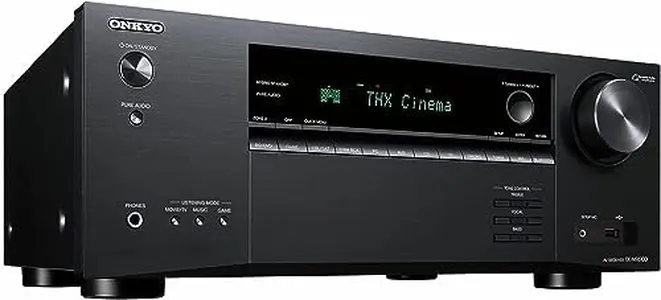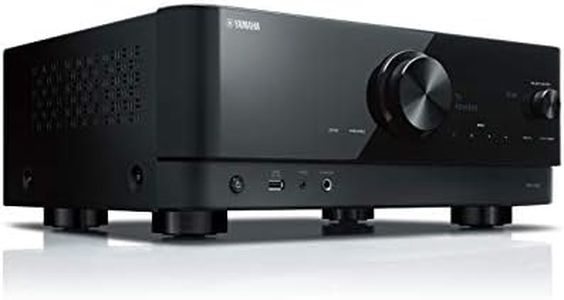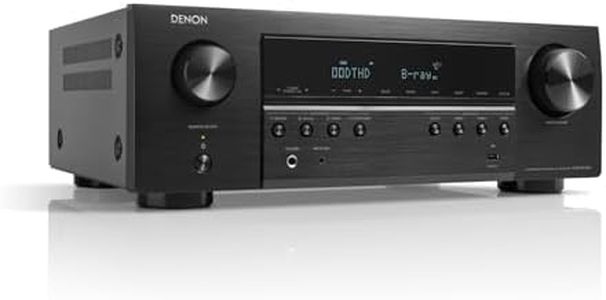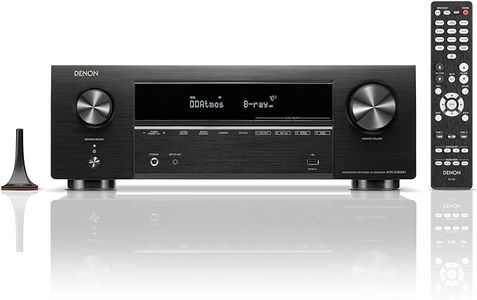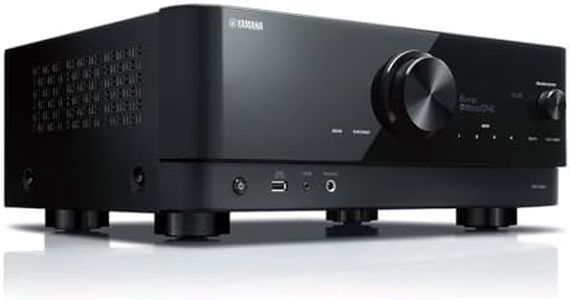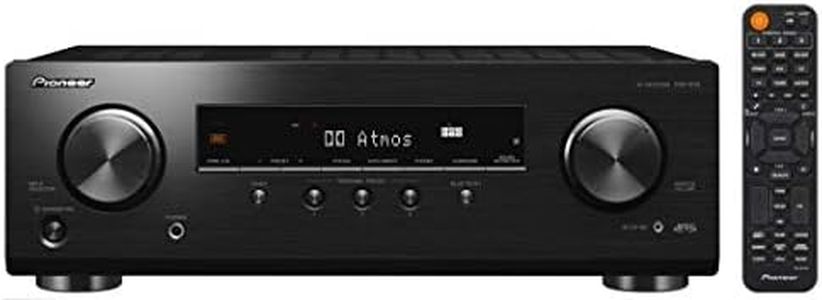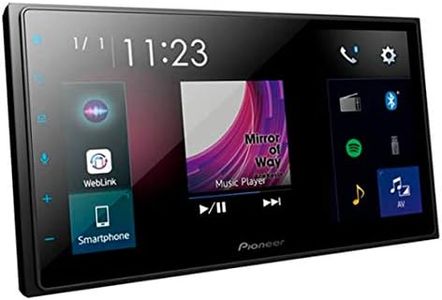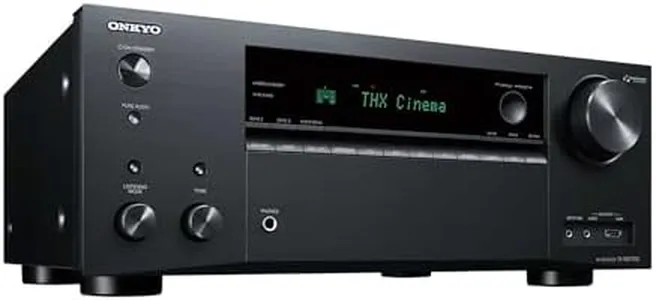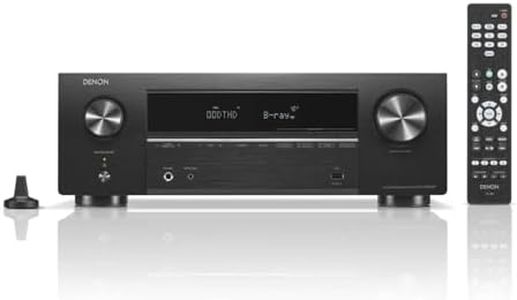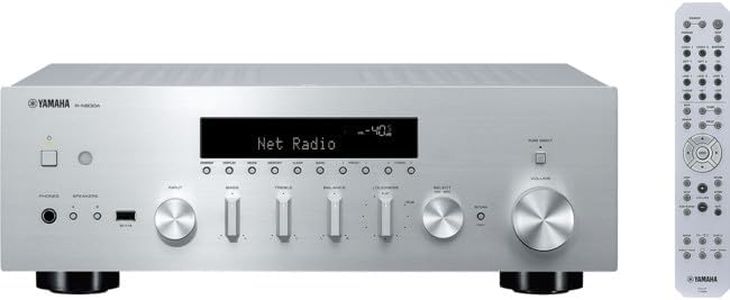We Use CookiesWe use cookies to enhance the security, performance,
functionality and for analytical and promotional activities. By continuing to browse this site you
are agreeing to our privacy policy
10 Best Av Receivers
From leading brands and best sellers available on the web.By clicking on a link to a third party's website, log data is shared with that third party.
Buying Guide for the Best Av Receivers
AV receivers are the heart of a home theater or audio system, acting as the central hub that connects all your sound and video sources to your TV and speakers. Picking the right AV receiver can greatly improve your viewing and listening experience, but it’s important to choose one that aligns with your current equipment, your space, and how you plan to use it. By understanding a few key specifications, you’ll be able to make an informed decision that fits your needs both today and in the future.Number of ChannelsThe number of channels in an AV receiver refers to how many speakers it can power at the same time. Common setups might be 5.1, 7.1, or even 9.2 channels, where the first number is the speakers and the second is the number of subwoofers. More channels allow you to set up larger and more immersive surround sound systems. If you only want a simple setup with a few speakers for movies or music, a receiver with 5 channels is usually enough. For bigger rooms or if you want the latest 3D audio formats like Dolby Atmos, consider receivers with 7 or more channels.
Power Output (Wattage per Channel)Power output tells you how much strength each channel sends to its respective speaker, measured in watts. More wattage generally means the system can play louder and deliver more dynamic sound, especially in large rooms. However, higher numbers aren't always better if you have sensitive speakers or a small space. For average-sized rooms and typical speakers, moderate power is enough—focus more on matching your speaker needs than chasing the biggest number.
Audio and Video Inputs/OutputsInputs and outputs describe how many devices (like game consoles, streaming boxes, or Blu-ray players) you can connect to your receiver and how versatile those connections are. Most people want enough HDMI inputs to connect all their devices. Also look for outputs like HDMI ARC or eARC, which can send sound back from the TV to the receiver easily. Think about your setup and count how many connections you need now and for possible future devices.
Supported Audio FormatsAudio formats like Dolby Atmos, DTS:X, and others tell you what kind of surround sound experiences your AV receiver can deliver. Newer formats provide more immersive, three-dimensional sound, which can make movies and games feel more lifelike. If you’re passionate about having the latest theater-like experience, choose a receiver with support for the newest formats. For casual listening or standard TV watching, basic surround sound support may be enough.
Wireless Features and StreamingModern AV receivers often include Wi-Fi, Bluetooth, and support for streaming services. These features let you play music from your phone or use services like Spotify without extra equipment. Having wireless features can be very handy if you like streaming music or want to control your system with your smartphone. If you plan to use a lot of wireless streaming, make sure the receiver supports the platforms you prefer.
Room Calibration and Setup AssistanceMany AV receivers come with built-in microphones and automatic setup modes that measure your room and adjust the sound accordingly. This process, called room calibration, helps you get the best audio experience based on your room's size and shape. If you’re new to home theater or want things to sound good with minimal hassle, look for models with easy-to-use calibration features.
4K/8K and HDR Video SupportIf you have or plan to buy a 4K or 8K TV and want the best image quality, make sure your AV receiver supports these video formats, as well as HDR (High Dynamic Range). This ensures your movies and games look vibrant and sharp. Support for these standards is important if you want to future-proof your system or are a video enthusiast; otherwise, standard HD video support will be enough for most uses.
